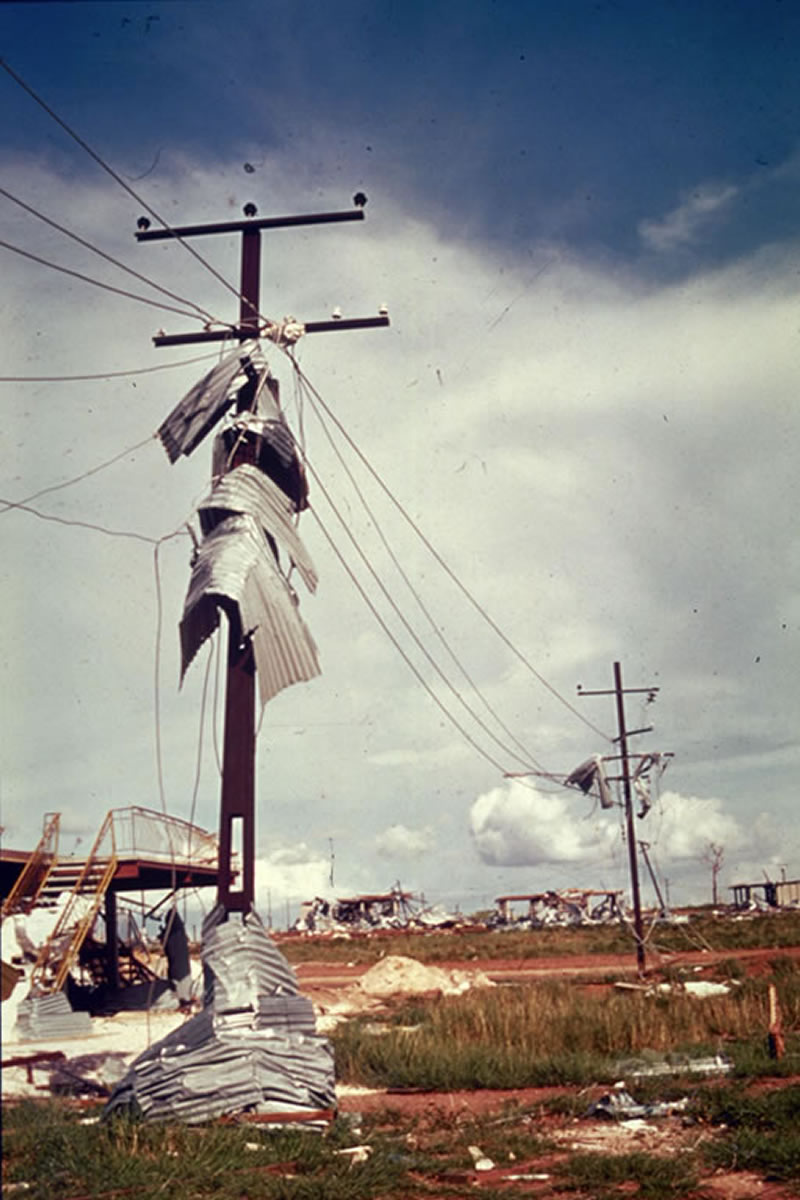(Risk Management Solutions, 2005)
How to reduce the impact
- changing the building codes so less damage would result
- educating the public as to what they should do with a approaching tropical cyclone
- having shelters ready during the tropical storm season.
- having shelters ready during the tropical storm season.
- Having emergency supplies ready during the tropical storm season
(Australian Bureau of Meterology, 2012)
' Weather forecasting advancements due to improvements in many areas, including computers, satellites, and scientific understanding. This talk will describe the science behind modern weather forecasting, how it has changed in the past few decades, and the prospects for future improvements, with a focus on severe weather.' (AFAC, 2011)

A check-list when preparing for a Tropical Cyclone.
BEFORE THE CYCLONE SEASON
- Check with your local council or your building control authority to see if your home has been built to cyclone standards.
- Check that the walls, roof and eaves of your home are secure.
- Trim treetops and branches well clear of your home (get council permission).
- Preferably fit shutters, or at least metal screens, to all glass areas.
- Clear your property of loose material that could blow about and possibly cause injury or damage during extreme winds.
- In case of a storm surge/tide warning, or other flooding, know your nearest safe high ground and the safest access route to it.
- Prepare an emergency kit containing:
o a portable battery radio, torch and spare batteries;
o water containers, dried or canned food and a can opener;
o matches, fuel lamp, portable stove, cooking gear, eating utensils; and
o a first aid kit and manual, masking tape for windows and waterproof bags.
- Keep a list of emergency phone numbers on display.
- Check neighbours, especially if recent arrivals, to make sure they are prepared.
WHEN A CYCLONE WATCH IS ISSUED
- Re-check your property for any loose material and tie down (or fill with water) all large, relatively light items such as boats and rubbish bins.
- Fill vehicles' fuel tanks. Check your emergency kit and fill water containers.
- Ensure household members know which is the strongest part of the house and what to do in the event of a cyclone warning or an evacuation.
- Tune to your local radio/TV for further information and warnings.
- Check that neighbours are aware of the situation and are preparing.
WHEN A CYCLONE WARNING IS ISSUED
Depending on official advice provided by your local authorities as the event evolves; the following actions may be warranted.
- If requested by local authorities, collect children from school or childcare centre and go home.
- Park vehicles under solid shelter (hand brake on and in gear).
- Put wooden or plastic outdoor furniture in your pool or inside with other loose items.
- Close shutters or board-up or heavily tape all windows. Draw curtains and lock doors.
- Pack an evacuation kit of warm clothes, essential medications, baby formula, nappies, valuables, important papers, photos and mementos in waterproof bags to be taken with your emergency kit. Large/heavy valuables could be protected in a strong cupboard.
- Remain indoors (with your pets). Stay tuned to your local radio/TV for further information.
ON WARNING OF LOCAL EVACUATION
Based on predicted wind speeds and storm surge heights, evacuation may be necessary. Official advice will be given on local radio/TV regarding safe routes and when to move.
- Wear strong shoes (not thongs) and tough clothing for protection.
- Lock doors; turn off power, gas, and water; take your evacuation and emergency kits.
- If evacuating inland (out of town), take pets and leave early to avoid heavy traffic, flooding and wind hazards.
- If evacuating to a public shelter or higher location, follow police and State/Territory Emergency Services directions.
- If going to a public shelter, take bedding needs and books or games for children.
- Leave pets protected and with food and water.
WHEN THE CYCLONE STRIKES
- Disconnect all electrical appliances. Listen to your battery radio for updates.
- Stay inside and shelter {well clear of windows) in the strongest part of the building, i.e. cellar, internal hallway or bathroom. Keep evacuation and emergency kits with you.
- If the building starts to break up, protect yourself with mattresses, rugs or blankets under a strong table or bench or hold onto a solid fixture, e.g. a water pipe.
- Beware the calm 'eye'. If the wind drops, don't assume the cyclone is over; violent winds will soon resume from another direction. Wait for the official 'all clear'.
- If driving, stop (handbrake on and in gear) - but well away from the sea and clear of trees, power lines and streams. Stay in the vehicle.
AFTER THE CYCLONE
- Don't go outside until officially advised it is safe.
- Check for gas leaks. Don't use electric appliances if wet.
- Listen to local radio for official warnings and advice.
- If you have to evacuate, or did so earlier, don't return until advised. Use a recommended route and don't rush.
- Beware of damaged power lines, bridges, buildings, trees, and don't enter floodwaters.
- Heed all warnings and don't go sightseeing. Check/help neighbours instead.
- Don't make unnecessary telephone calls.
(Australian Bureau of Meteorology, 2012)


















